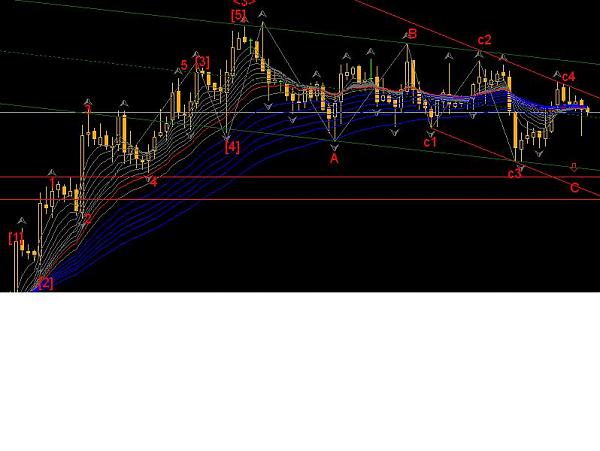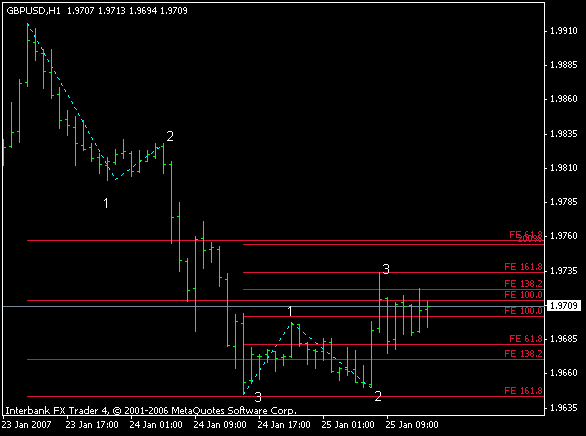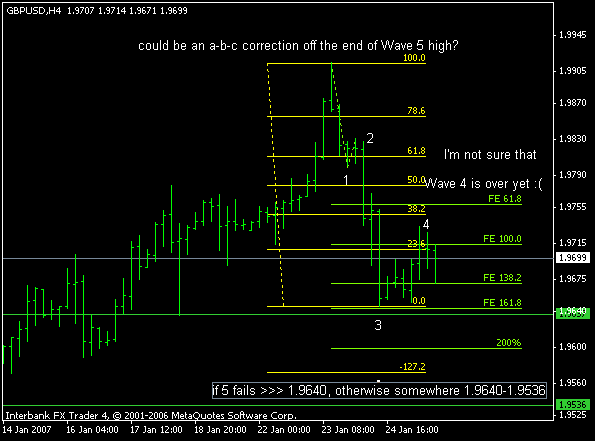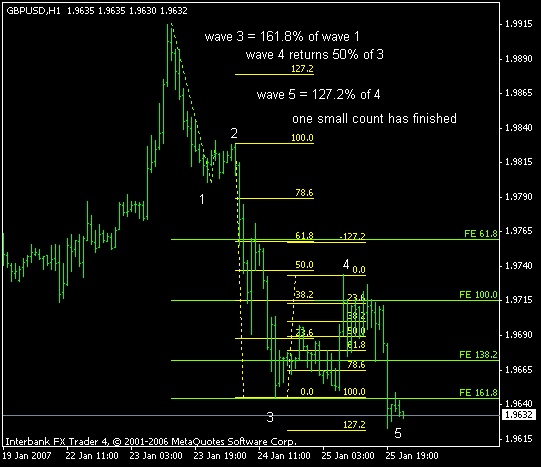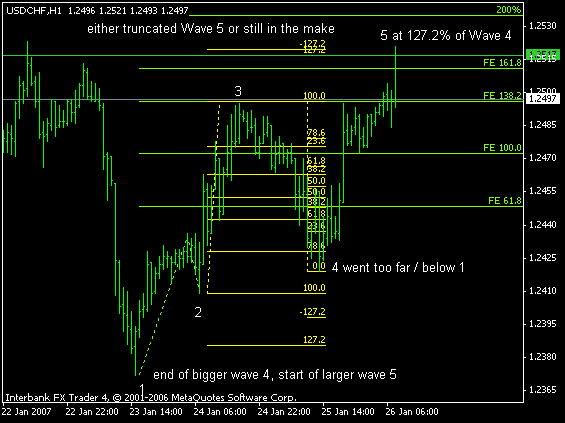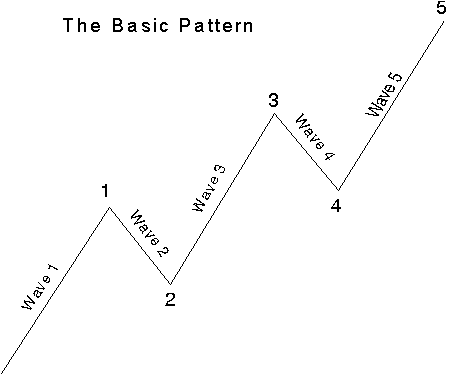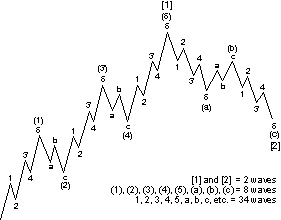1/19/2007 5:58:25 PM Every Monday, Wednesday and Friday our our European Short Term Update tells you about Special Global Opportunities! The latest forecasts include the India Sensex Index, China's Shanghai Composite Index, Milan S&P/MIB Index and Madrid IBEX 35 Index. See the Jan. 19 issue of the ESTU for details. It's online now, part of the European Financial Forecast Service.
Here's a chart of one of the Dow Utilities stocks that illustrates the spectacular rally in the index:
http://www.elliottwave.com/images/ma...%201-19-07.gif
Some analysts say that utilities have performed so remarkably well because of the rising energy costs. Perhaps. But can you see in this chart any tell tale Elliott wave signs hinting at the direction the index may go from here?
Well, obviously there is what looks like a completed five-wave structure from the mid-2002 low. That's one sign; there are more. In fact, why don't we let EWI's Prime Stocks Flash analyst do the talking:
1) Again, this Dow Utilities stock shows a five-wave rally from mid-2002.
2) Plus, "an impulsive decline has ensued from the December 2006 high."
3) On top of that, "this decline has already violated operative channels on the daily and weekly charts."
4) Last but not least, wave (5) in the chart above "has taken the shape of an ending diagonal, which appears complete, amidst momentum divergences."
This stock represents a large chunk of the Dow Utilities: 9 percent, to be exact. And in the words of our Prime Stocks Flash analyst, all the technical evidence combined points to "a large correction, at minimum." That's why this stock was the focus of a Prime Stocks Flash trading alert we sent to subscribers yesterday (Jan. 18), complete with specific trading recommendations and price target levels.
*****
The Dow Utilities sector has been investors' darling since late 2002. Over the past four years, the Dow Jones Utilities Average an index comprised of fifteen largest energy service providers in the U.S. has more than tripled, far surpassing the S&P 500, the benchmark against which every mutual fund manager measures their performance.Here's a chart of one of the Dow Utilities stocks that illustrates the spectacular rally in the index:
http://www.elliottwave.com/images/ma...%201-19-07.gif
Some analysts say that utilities have performed so remarkably well because of the rising energy costs. Perhaps. But can you see in this chart any tell tale Elliott wave signs hinting at the direction the index may go from here?
Well, obviously there is what looks like a completed five-wave structure from the mid-2002 low. That's one sign; there are more. In fact, why don't we let EWI's Prime Stocks Flash analyst do the talking:
1) Again, this Dow Utilities stock shows a five-wave rally from mid-2002.
2) Plus, "an impulsive decline has ensued from the December 2006 high."
3) On top of that, "this decline has already violated operative channels on the daily and weekly charts."
4) Last but not least, wave (5) in the chart above "has taken the shape of an ending diagonal, which appears complete, amidst momentum divergences."
This stock represents a large chunk of the Dow Utilities: 9 percent, to be exact. And in the words of our Prime Stocks Flash analyst, all the technical evidence combined points to "a large correction, at minimum." That's why this stock was the focus of a Prime Stocks Flash trading alert we sent to subscribers yesterday (Jan. 18), complete with specific trading recommendations and price target levels.
